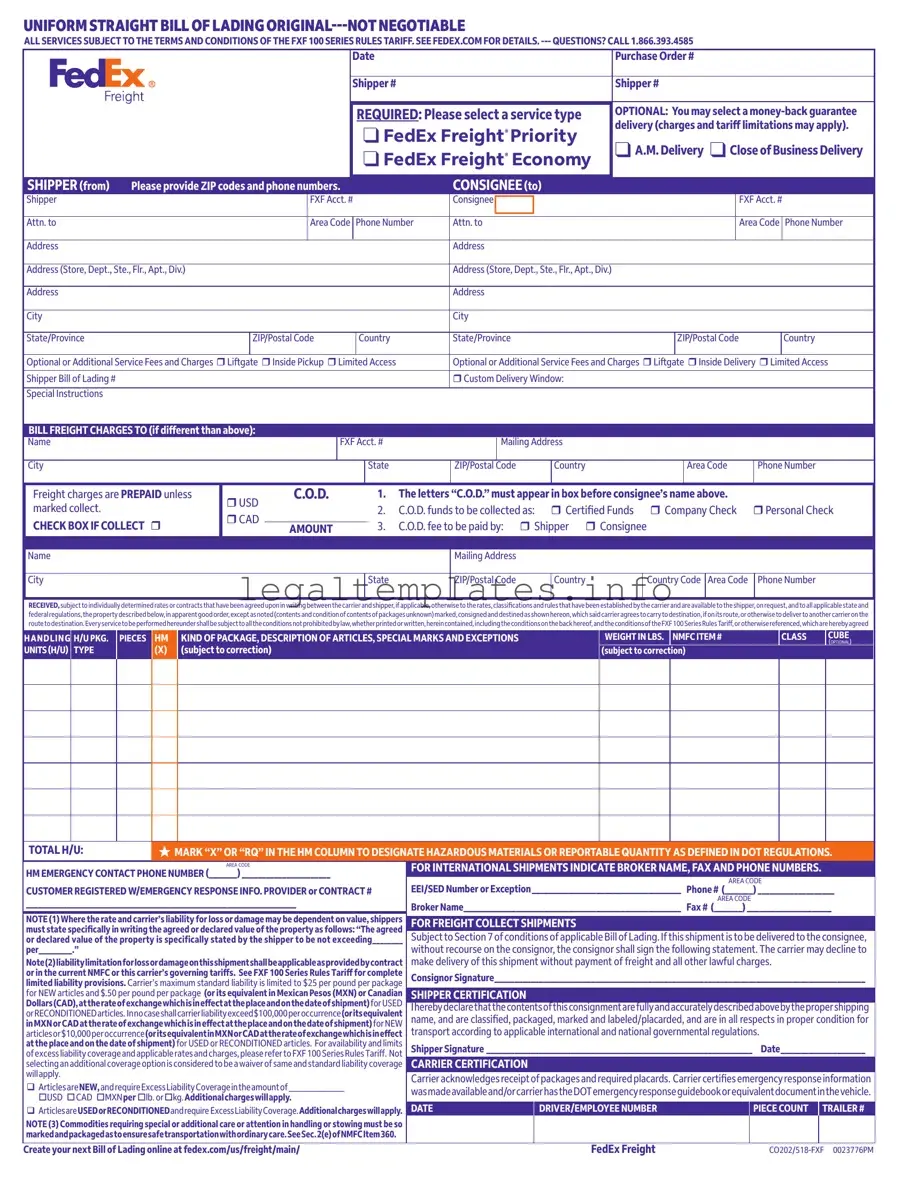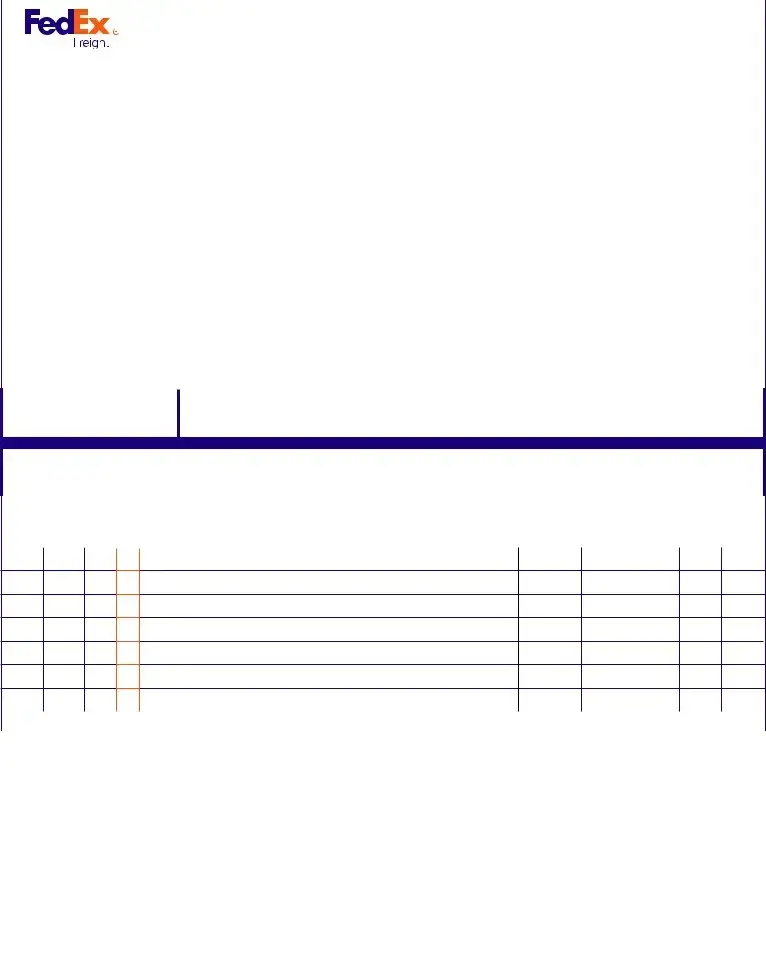A bill of lading, like the one provided by FedEx, is closely related to an Air Waybill (AWB). Both serve as a receipt for goods shipped, providing details about the cargo and the terms of shipping. While a bill of lading is used for sea or ground transportation, an AWB is specifically for air freight. Each outlines the shipper and receiver's details, the goods being transported, and the conditions of the shipment. However, an AWB also includes specific information required for international air cargo, such as airport of departure and destination, making it unique to air transport.
Commercial Invoice shares similarities with a bill of lading in that it details the transaction between the buyer and seller, including a description of the goods, their value, and the terms of sale. While the bill of lading acts as a title document to the goods and outlines the contract for shipment, a commercial invoice is used for customs clearance and as proof of sale. Both documents are essential for international trade, ensuring that goods are properly documented through their transportation and delivery process.
Shipping Label, though more simplified, parallels the bill of lading in function. It identifies the shipment's origin, destination, and sometimes the weight and contents, similar to what the bill of lading specifies in more detail. A shipping label serves as an identifier for the package in transit, while the bill of lading covers legal aspects and shipment terms. Despite their differences in scope, both play crucial roles in the logistics chain, ensuring that goods are correctly routed and tracked.
The Packing List complements the bill of lading by detailing the contents of a shipment without indicating value or terms of sale. While the bill of lading functions as a receipt and contract between the carrier and shipper, the packing list serves more as an organizational tool for all parties involved, including customs authorities, to verify the cargo. It focuses on quantities, descriptions, and weights of the goods shipped, making it an essential document for logistic accuracy.
Certificate of Origin is another document closely related to the bill of lading, offering proof of where the goods in a shipment were produced or manufactured. While the bill of lading outlines the terms of shipping and acknowledges receipt of the cargo, the certificate of origin is crucial for customs, determining duty rates and verifying the eligibility for trade agreements. Both documents are vital in international commerce, supporting the legal and logistical aspects of shipping.
Warehouse Receipt, much like a bill of lading, serves as proof of storage of goods and outlines the terms under which they are held. The key difference lies in their specific contexts; the bill of lading covers goods in transit, while a warehouse receipt covers goods in storage. Both documents are negotiable and can be used to claim ownership or transfer title of the goods, making them critical in finance and logistics.
Delivery Order bears similarity to the bill of lading as it authorizes the release and delivery of cargo. However, a delivery order is issued by the carrier or their agent, instructing the release of the shipment to the consignee, usually after the original bill of lading has been surrendered. This document is essential in the logistics chain, facilitating the handover of goods from carrier to receiver under the terms initially set out in the bill of lading.
Sea Waybill functions similarly to a bill of lading, providing a contract for carriage and a receipt of goods. Unlike the bill of lading, which can be negotiable and requires to be presented for the delivery of goods, a sea waybill is non-negotiable. This characteristic streamlines the release of cargo upon arrival, as no original document needs to be surrendered, benefiting shipments where direct delivery to the receiver is desired without the need for transfer of title during transit.
The Dock Receipt is issued by a maritime carrier acknowledging the receipt of goods for shipment. Similar to a bill of lading, it is a critical document in international shipping, used particularly at the point of origin to confirm that the shipper has delivered the goods to the port. While it details the condition and quantity of goods received, its function is more preliminary, serving as a precursor to the issuance of the bill of lading once the cargo is loaded onto the ship.
Lastly, the Proof of Delivery (POD) document is related but serves as confirmation that the shipment has been delivered, detailing the date, location, and the recipient's signature. It is the culmination of the shipping process, providing final verification compared to the bill of lading, which initiates and outlines the terms of the shipment. Both are essential records for the sender, receiver, and carrier, establishing the accountability and movement of goods.

